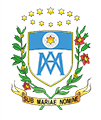The Marist Life
The Marist Way
Marists prefer to work where the Church doesn’t exist or where it is not strong. For that reason they are often out on the ‘boundaries’ – new suburbs, immigrant communities, youth work, communications media, prisons, rural and urban indigenous group
How Mary would do it
This preference comes from their spirit. It’s the spirit of Mary. They ask themselves, ‘What would Mary do?’ Most likely, as a mother, she would be concerned about her children – any children – who are sick, falling behind, or excluded in some way. And she would go by ‘the main road’ or ‘the back road’ to help them get on their feet.
Mary’s spirit determines what sort of work Marists prefer to do. It also determines the way they try to work. Like a mother… low key, practical, personal, ‘whatever works’, after hours, impervious to rejection….
Common Dream
There is great diversity among Marists, but this dream is held by all. We like it. It’s very satisfying and we’ve found that it works.
And it’s been that way, for a long time. This dream first inspired a group of seminarians – the first Marists back in the 1800’s in France. Jean Claude Colin was their leader. Among them were Marcellin Champagnat and Peter Chanel who later became saints.
New Zealand home grown
New Zealand and Marists have grown up together. Marists were the first priests to come to this country. The first bishop of New Zealand, Pompallier, was one of them. The pope at that time could not find priests for these remote islands. But to the young Marists, the call seemed perfect. Weren’t the people of the South Pacific ‘uncared for’ and ‘left out’? Weren’t they just the people that Mary, a mother, would want to help? The pope entrusted much of the South Pacific to those young Marists. Many dozens came here to help build up the church where it did not exist. That work continues here and elsewhere.
International
Today Marists are in Africa, Oceania, Latin and North America, Asia, Europe, Australia and New Zealand. There are several branches – lay people, sisters, brothers, and priests.
Brothers of the Society of Mary
Many Marists are priests, but not all are.
Brothers are lay people who live the Marist life alongside the fathers. Like priests they belong to the Society of Mary, living the same spirit and community life.
Brothers work in the same sorts of ministry as the priests, though they don’t celebrate Mass or the sacraments.
In practice, a brother has greater scope and diversity of work options. He may have a trade or a profession.
As lay men, brothers are more like the people ‘in the pews’. And generally, brothers are closer to them.
In the seminary, all students do the same courses – whether they wish to be priests or brothers.
Both vocations require a good education in the faith. Therefore, if a student wishes to delay this choice of being a priest or brother, he may do so for several years while continuing his training.
The brothers who train at the Marist Seminary (for the Society of Mary) are brothers who live and work with the fathers.
For clarification, there is another branch of Marist Brothers who run their own projects – and have their own training program.
These brothers are much more numerous. They are well known for their youth work and their excellent schools which are found all over the world.
Marist Priests
Ask any Catholic what a priest does…and they’ll say that he is the one who offers Mass and leads the people in this celebration.
In a way, he stands at the meeting point between God and God’s people.
A priest has a vital role in the life and mission of the Church… on behalf of Christ and on behalf of the people.
To be a Marist priest, is to bring a certain preference, a certain style, a certain approach to this sacred role.
